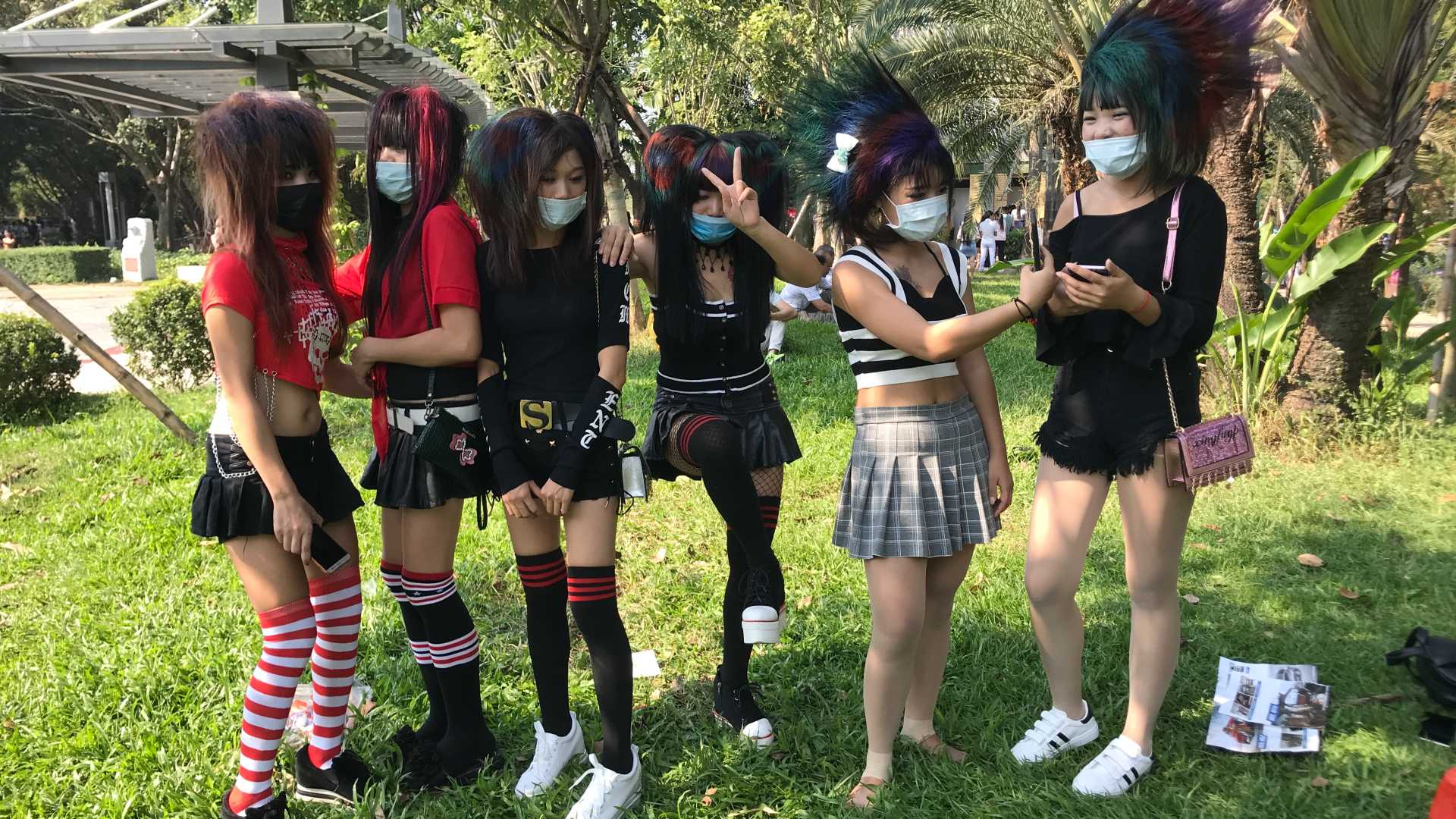Documentary “We Were Smart” sheds light on the shunned subculture shamate and China’s urban-rural gulf
“Shamate don’t understand the world, nor does the outside world understand shamate,” says director Li Yifan of the subject of his new documentary, a wildly controversial subculture that emerged in China in the late ’00s. His film, We Were Smart (杀马特, 我爱你), gives a rare look into the life and struggles of this group of marginalized, often poor rural youths through their own accounts. It has helped reopen old wounds and spark conversations around class and conformity, over a decade on from the vicious takedown that marked the end of the shamate movement.
Focused largely around rural migrant workers who’d travelled to China’s cities to get in on, and help power, the country’s economic boom, shamate was largely identified by its outlandish fashion sense, makeup and hairstyles. Spreading through dedicated online forums, the subculture’s name came from the Chinese transliteration for the word “smart” — “sha-ma-te.”
Li spent two years collecting 915 first-hand video recordings from former shamate members, as well as conducting full-length interviews with 78 of them. According to the director, almost all shamate participants were second-generation migrant kids who were born in the ’90s and hailed from underserved villages and towns.
In the documentary, one trend that emerges is that many of these young people were “left-behind children,” kids whose parents had taken jobs in major urban areas, leaving their offspring with grandparents at home in the village. Many talk of only seeing their parents on occasion, such as during the national Spring Festival holiday. Many of the interviewees also relay how they dropped out of school at a very early age and went to look for work themselves, often heading to manufacturing hubs on the basis of a vague lead or tip from a fellow villager.
Once there, the young migrant workers found themselves in unfamiliar surroundings and often in intense, exploitative working arrangements. In search of an outlet for pent-up tensions and a sense of belonging, they formed their own identity: shamate.
Public parks and roller rinks near these manufacturing hubs quickly became shamate strongholds. Groups of young people would gather in tight T-shirts and low-waist jeans, sporting hairstyles with varying levels of flamboyant colors and electric curls sticking out at different angles.
Looking like a mix of elements from US or European glam rock and visual kei from Japan, shamate style was intended to stand out — and it certainly did that. But this also made them a target for the mainstream.



The irony of all this being that this “shocking” look is now commonplace and ordinary.
As is almost every counter-cultural look or item in western countries now (I live in europe). What’s interesting with Shamate is the context, and how people and hierarchy reacted to it.
Do you live in China or have strong bonds with people there ? Can you tell us more how weird looks are now common or marketable there? I’m genuinely interested.
I’ve lived here for 20 years and have strong ties via marriage into the locality.
The clothing in that picture would not raise any eyebrows today, especially in Wuhan given that it’s a huge university town. (It would probably get a harsher reaction in smaller, more clannish cities.) It would take me under two minutes to find even more “shocking” clothing for sale in Taobao, and most of that two minutes would be me wrestling with my shit Internet connection. (ISPs are evil the world over it turns out.) There’s tattoo parlours everywhere, and some of the tattoo designs I’ve seen are very garish and outlandish (though typically easily concealed by “work” clothing, so there’s some push-back against that still).
But it wasn’t an easy route to get here. Story time.
In the early days of my stay here, all of this stuff was reacted to badly. In my first school, students who dyed or bleached their hair would be disciplined and forced to dye it black again, for example. A tattoo of any kind anywhere on the body was grounds for expulsion. Then in about 2002 a girl entered the campus. She was the daughter of one of the high Party officials on campus and thus had incredible amounts of power. And she had a rebel spirit that I just loved to watch.
The very first thing she did was dye her hair blue. And not a subtle blue shading on black hair. She’d bleached her hair until it was practically white then dyed THAT an electric blue. Because she was a Party official’s daughter, and because he wasn’t doing anything about it, the teachers and cadres and deans and such of the school couldn’t do a thing to her. And because she was doing it, other students started to do it until, at one ridiculous time at around the midterms of the first term that year, most classes looked like someone had accidentally spilled a bag of Skittles into the room. Person-sized Skittles.
She, all by her lonesome, broke up so many regulations that were being stupidly enforced it was amazing. She got a tattoo. Now that couldn’t be enforced. She wore coloured contacts, and not just eye colour changers. Eye SHAPE changers: lizard eyes, goat eyes, cat eyes, etc. Now those were allowed. She started wearing outfits that made most people in positions of power call slutty, but nothing could be done to her, so other students followed suit. By the time I left that school in 2003, the dress codes were in a shambles and showed no signs of stopping.
And then I moved to Wuhan and watched similar things happen, but over a longer period of time. There was no single untouchable renegade, just the inexorable force of cultural drift. The net effect was the same in the end, though: hair dying is normal, as are (concealable) tattoos. Revealing clothing is not commented on (though to be fair Wuhan is hot and humid and the clothing is also practical as a result). So all the shamate stuff is now commonplace and current counterculture would be hard-pressed to find something new to shock their elders with.
Thanks for sharing your story !
Very cool